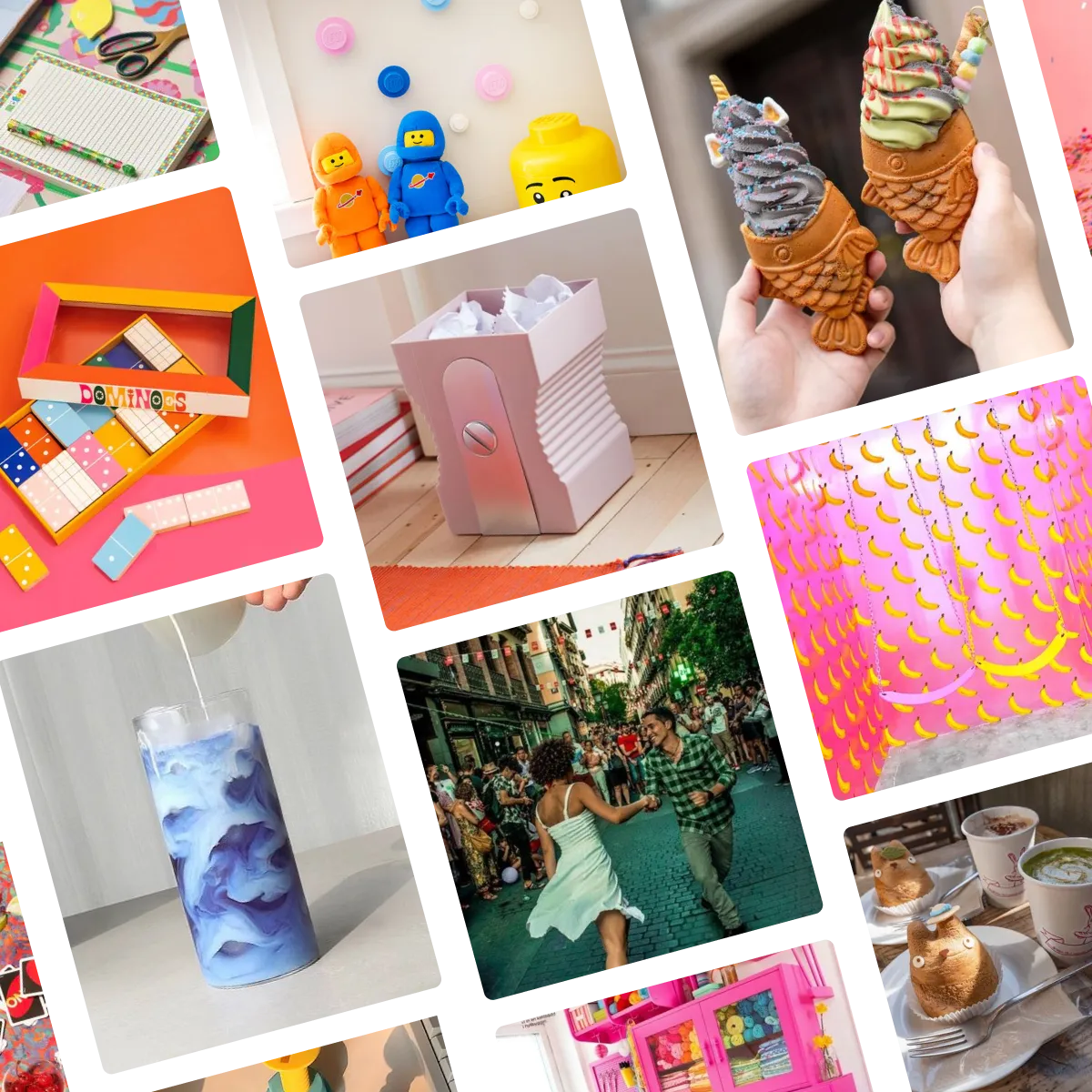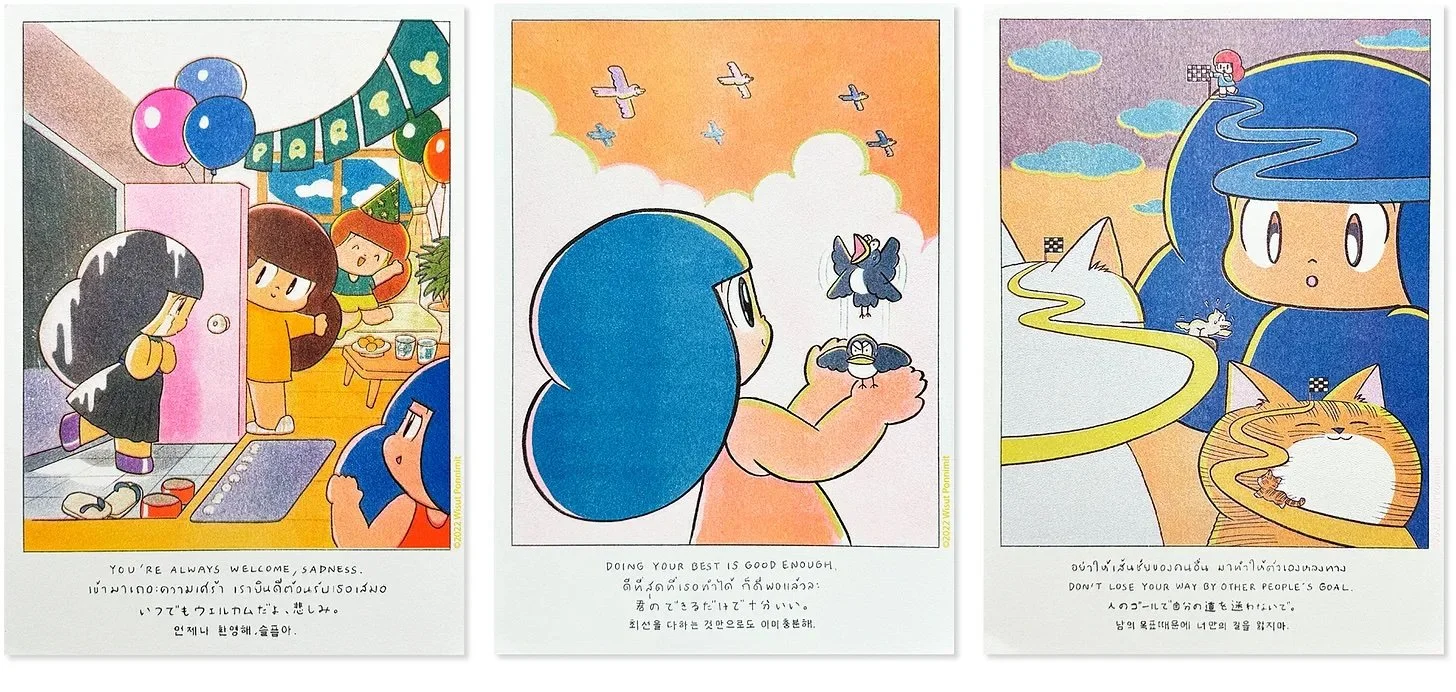Issue 11: Work Hard / Play Hard
On work, life, and balance.
🛬 The Balancing Act
Happy Monday and welcome back to the show! I’m writing to you happily jet lagged after a truly restorative trip to Japan. From the stationary to the salted sakura ice cream to the shrines lit up at night to the sheer act of taking two weeks away from my desk, this was probably the most inspiring vacation I’ve ever taken, and I can’t wait to share the creative fallout with all of you.
It will surprise nobody to know that I never really stop doing my job. I became a designer because I couldn’t stop playing with fonts and layouts in Microsoft Word as a kid, and today no matter where I go, I’m always studying the beautiful things around me, consciously or not. Design is too much a part of who I am to ever fully turn off. This is, in many ways, a wonderful thing. But given the importance of work-life balance no matter how much you love your job, it can also make it hard to unwind and open up space to regenerate or just be. The harder it is to step away from work, the more important it is to be intentional about playtime – both in making space for it, and in committing to be present for the gifts it has to offer.
As important as I think it is to distinguish between work and play, I also think each area of our lives has something important to learn from the other. The more we can bring the principles of play into our work – dedicate ourselves to things that matter to us, show up exactly as we are, demand space for joy throughout the day – the more sustainable and fulfilling our lives become. Conversely, the more we treat play like it really matters, the more freedom we all find to set our own priorities, whatever they may be. That’s why this week, we’re looking at design through work and play. How do we get real through the design process? What does the best desktop trashcan look like? What dope office art did I pick up in Japan? Read on for all this and more!
✨ Moodboard of the week
The Work Hard / Play Hard moodboard is an ode to little pleasures. It’s whimsical, it’s bright, it features at least two Totoros (minimum acceptable quantity), it loves a good game of Uno. It reminds us to prioritize the things that matter to us every day, and, however serious life decides to be, to make a little space for silly.
🔍 Question of the week
“How do you design a logo from scratch?”
Part 1: Values and Communication Priorities
This week, we kick off our series on the creative process. Over the next few weeks, we’ll be looking at the steps that lead from 0 to final product, using logo design as an example. We have so much to explore, and I can’t wait to dive in!
For me, absolutely nothing can be designed without setting a solid foundation, so that’s where we start. This means making sure both my clients and I are absolutely clear on what they want to say and how they want to say it. This is usually a transformative process for all of us, since it typically exposes a lot of assumptions we all bring into the process. It also sets the stage not only for the design itself but for how it will fit into a larger strategy. Here’s what that looks like in practice:
Kickoff call
Even if I’ve been working with someone forever, we always start a major project with a call to talk through their hopes, dreams, and goals. This is a chance for my client to tell me literally everything they currently know about the project, including what they need, what kind of result they have in mind, and why they’re doing the project in the first place. People often apologize for overloading me with information here, and to me, there is truly no such thing. All information is good information.Intake questionnaire
After our initial call, I send over a questionnaire. This is always a mix of pre-determined questions I ask everybody and questions informed by our initial call, meaning no two are the same. This lets me make sure I have the baseline information I need to get started, guarantee I really understand their goals (and clarify anything I’m confused about) and help them get crystal clear on aspects of the project they may not have considered. Sample questions may include, “What are your top three communication priorities?” “What are some peer brands you find inspiring?” and “How do you want people to feel when they look at your logo?”Review call
Usually, clients will take about a week to get the questionnaire back to me (although they can have as much time as they need!) at which point we schedule a call to talk it through. I usually ask a lot of follow-up questions here and take an obscene number of notes. By the end of this call, I should have a perfect understanding of what they are looking to achieve.Goal writeup
I never want to assume anything, so after this call, I always translate my… shall we say, ADHD-influenced notes into a clearly outlined, bullet-point writeup of everything we discussed. I usually start this immediately after the call while it’s still fresh, and send this over within 24-48 hours. They write back with any corrections or amendments, and we’re off to the races!Strategy sheet
The final step before getting started on actual design is to translate the goal writeup into a concrete strategy. Depending on the project scope, this may be a formalized process where we come up with a mission statement, slogan, positioning strategy, and more, or it may be a quicker – but no less important – alignment on direction, rolled in with the step above. This way, we can check against our strategy at every stage to make sure we never lose sight of our ultimate goals, or our plan to reach them.
Check back next week, when we will learn about one of my favorite stages. As we move through the creative process, please feel free to reach out to me with any questions you may have in the comments or by sending me a message. Nothing gives me greater joy than bringing transparency to the design process and sharing what I’ve learned over the years with all of you!
Submit your burning design questions by sending me a message below. Questions can relate to design itself, entrepreneurship, workflow, or anything you think I may be able to answer. There are no limits.
🎧 Soundtrack of the week
This week’s soundtrack starts as a contemplative welcome to Monday morning and ends as an all-out early 2000s bar mitzvah-level rager. Along the way, the gradient flows through pump-up jams, songs to get in a flow, reminders to let your hair down, and some of my favorite music to get inspired to both in and out of the office.
🏁 My Favorite Things
After living in my house for just over a year, I’m finally ready to start decorating my home office and have been picking up inspiration all over the place. I found these prints by Thai artist Wisut Ponnimit at Tokyo’s Mori Art Museum on the last day of my trip and immediately scooped them up. I love the tone set by the bright colors, the messages, and the artistic style, and I can’t wait to make them a focal point of the new space.
🌱 Touching Grass
📖 What I’m reading: I didn’t read any of the things I planned to while in Japan, so I’ll be actually moving on with the Mistborn series this week. However, I did read another one of Brandon Sanderson’s books, Yumi and the Nightmare Painter, while I was away and it was freaking awesome.
🎧 What I’m listening to: I had the privilege of participating in another Gaia Music Collective 1-day choir this past weekend, where we sang Eric Whitacre’s Sleep. I haven’t sung proper choral repertoire since graduating from my childhood choir, and it was a true blessing to sing such a beautiful piece in such a supportive and earnest environment. I highly recommend checking out the piece if you’ve never heard it.
📺 What I’m watching: When we were in Kyoto, we had the great fortune of attending a performance and conversation with a maiko – a member of Kyoto’s famously intense geisha (or geiko, as they are known in Kyoto) training program. She recommended Netflix’s The Makanai: Cooking for the Maiko House, about a prospective maiko who struggles in training but discovers her love of cooking in the process. The first few episodes have been truly delightful, and I can’t wait to see what happens next.
🍱 What I’m eating: You’d think I’d be sick of Japanese food after 2 weeks eating nothing but, but if anything, this trip has had the opposite effect. One thing I love about Japanese home cooking is its ridiculously favorable effort-to-deliciousness ratio so I’ve been experimenting with a few new recipes including miso soup, cold somen noodles, and tsukemono, or salt-pickled cucumbers.
🥇 What I’m anticipating: The Olympics are about to begin, and I literally couldn’t be more excited.

